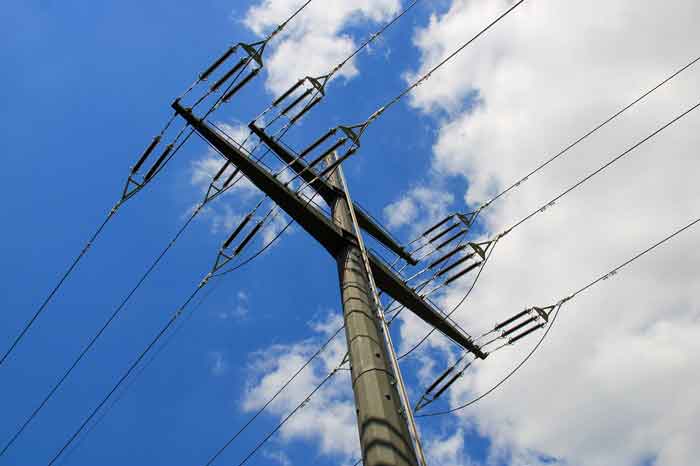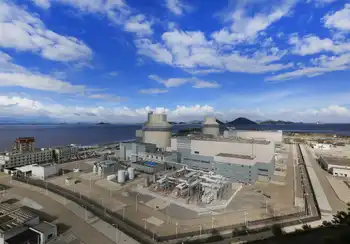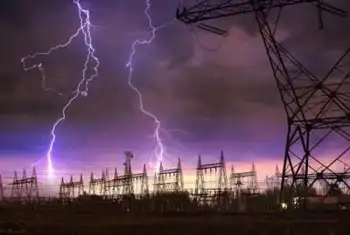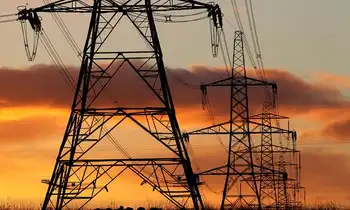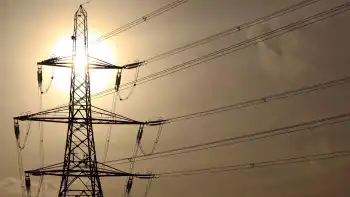Areva looks to build on European success
By Bloomberg
CSA Z462 Arc Flash Training - Electrical Safety Essentials
Our customized live online or in‑person group training can be delivered to your staff at your location.

- Live Online
- 6 hours Instructor-led
- Group Training Available
ArevaÂ’s new model, the evolutionary power reactor, or EPR, has been chosen for at least 11 of the 41 new plants planned or under construction in the European Union. Westinghouse, which is pushing its AP1000 pressurized water reactor, hasnÂ’t built a plant in the region for more than 20 years.
As many as 180 reactors may be completed in the next eight years in countries from China to Brazil, according to the World Nuclear Association, while a further 282 have been proposed. Areva and Westinghouse face rivals such as General Electric Co.Â’s venture with Hitachi Ltd., RussiaÂ’s ZAO Atomstroyexport and Korea Electric Power Corp. in bidding for contracts.
“Areva has a leg up on the competition,” said Ben Elias, a New York-based analyst with Sterne Agee & Leach Inc. “They will help utilities run their nuclear plants,” as the French company also supplies uranium and disposes of nuclear waste. “That’s important for Chinese and Indian clients.”
French state-controlled Areva is targeting a third of the 300 or so atomic plants that will be built around the world by 2030 as nations seek to cut dependence on oil and gas imports and tackle global warming, said Michael Cerruti, the Paris-based companyÂ’s vice president for marketing.
“They have the implementation in Europe historically,” said Alex Barnett, an analyst with Jefferies International Ltd. in Paris, who has a “buy” recommendation on Areva. Clients in the region may shun Westinghouse designs and stick to the models they run already, he said.
Areva has built about 102 reactors to date, mostly in Europe, and its technology is used in all 75 commercial French and German units. Siemens AG, EuropeÂ’s largest engineering company, built those in Germany and formed a venture with the French company in 2001, while Electricite de France SA, in which the state has an 85 percent stake, has been a consistent buyer of French technology for the 58 reactors in its home market.
French President Nicolas Sarkozy took Areva Chief Executive Officer Anne Lauvergeon and other executives on a visit to the United Arab Emirates in May, seeking to sell French nuclear technology to the Middle East nation in preference to competing U.S. and Korean offers. Sarkozy said last year itÂ’s FranceÂ’s role to help countries who want civil nuclear energy.
Areva said last month it plans to sell a stake of about 15 percent and may divest its power-grid operation to finance expansion. Board members decided to raise capital by selling shares to industrial and strategic partners and possibly disposing of the Transmission & Distribution unit.
Areva, currently 93 percent owned directly or indirectly by the French government, needs cash to develop uranium mines and buy Siemens’s share of their reactor-making venture. The moves will help the company be a nuclear-energy “champion,” focused on businesses from mines to waste recycling, Prime Minister Francois Fillon said in May.
Lauvergeon said the move may raise 3 billion euros ($4.2 billion), adding the company will invest 10 billion euros on expansion in the next two years. She also said there is room for Areva to deepen its partnership with Mitsubishi Heavy Industries Ltd., the Tokyo-based industrial group.
Areva is now marketing the EPRs, which are also a form of pressurized water reactor, emphasizing their quadruple safety systems and flexible fuel management. One is being built at Flamanville in Normandy and another on the west coast of Finland, while two are under construction in China. The Finnish plant is more than 25 percent over its 3 billion-euro initial budget and electricity generation at the reactor may be delayed until 2012, three years behind its original schedule.
ArevaÂ’s new design is for a plant of 1,600 megawatts, while Westinghouse is proposing a smaller 1,154 megawatt reactor with a modular design which it says is more efficient and cuts costs.
Westinghouse says its technology is the basis for approximately one-half of the worldÂ’s operating nuclear plants, including 60 percent of those in the United States. According to the WNA, there are 436 reactors in service globally.
“We feel our technology is the most attractive,” Vaughn Gilbert, a company spokesman, said. “It would be impossible for one company to build all the new reactors. The market is so big that everyone will be able to do well, and we think we’ll do very well.”
WestinghouseÂ’s sales surged to $3.7 billion in 2008 from $800 million in 1999, almost half of which came from operations outside of the U.S., Gilbert said.
Areva anticipated the current atomic revival as early as 2002, Cerruti told delegates at the European Nuclear Power conference on June 29.
The French company has a larger workforce than Westinghouse, which may give it an advantage because of the skills shortage in the industry, said Colette Lewiner, the global leader of energy and utilities at management consultants Capgemini in Paris. She estimates that global spending on building new reactors could reach as much as $1.05 trillion by 2030.
ArevaÂ’s nuclear unit boosted its workforce by 33 percent in the five years through 2008 to 44,623, according to Christian Hillrichs, a vice president at the division.
Headcount will grow by up to 5 percent a year, he said in an interview. That compares with a 12,500 workforce at WestinghouseÂ’s nuclear operations, which will expand by about 750 this year and at least 1,000 on an annual basis in coming years, said Gilbert.
EDF, the French state-owned utility that bought British Energy Group Plc for $20.5 billion in January, will commission Areva to build four nuclear plants in the U.K. E.ON AG and RWE AG, GermanyÂ’s biggest utilities, are also planning new reactors in Britain.
U.S. utilities have chosen WestinghouseÂ’s technology for 14 new plants, and contracts for six of those have already been signed, Gilbert said. Construction on the first will begin in 2011, he said.
Westinghouse expects China to choose its AP1000 design for the majority of its planned reactor fleet, Gilbert said, adding the company will complete its first reactor in China in early 2013. Westinghouse has four AP1000 units under construction in the country, according to its Web site.
Toshiba owns 67 percent of Westinghouse, while U.S. power plant builder Shaw Group Inc. holds 20 percent, uranium producer Kazatomprom has 10 percent and Tokyo-based IHI Corp. owns 3 percent.
GEÂ’s boiling water reactor technology is used in more than 90 of the 436 nuclear power plants operating across the globe and one third of the installed base in the U.S., according to its Web site.
“There will probably be a certain domestic flavor, a domestic preference” as Westinghouse and GE sell more reactors in the U.S,” said Lewiner, who used to work at EDF.
In contrast, the U.S. only made up about 15 percent of ArevaÂ’s overall sales last year. Areva said itÂ’s building a manufacturing plant in the U.S., which will start in 2012.
EDFÂ’s planned purchase of half of Constellation Energy Group Inc.Â’s nuclear-power unit for $4.5 billion, may help Areva gain a foothold in the U.S. EDFÂ’s UniStar Nuclear Energy LLC joint venture with Constellation is seeking to develop nuclear projects in North America.
Areva is aiming to expand its manufacturing capacity by 2015, enabling it to construct six plants a year, according to Luc Oursel, head of ArevaÂ’s reactors and services unit, speaking in a Moscow interview in May.
“Their investment program is based on holding or expanding that third of the market share,” said Pierre Boucheny, a Paris- based analyst with Kepler Capital Markets, who recommends investors buy the stock.
“They need to put those manufacturing capacities in place, hence the sale of the transmission and distribution unit and stakes” in companies including GDF Suez SA, STMicroelectronics NV and Eramet.






